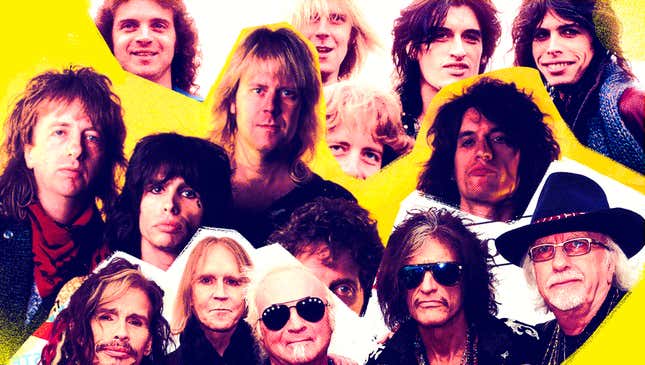
Over the course of 50-plus years as one of America’s foremost practitioners of the art of rock and roll, Aerosmith has experienced more than their share of highs and lows. Steven Tyler, Joe Perry, and company have delivered a string of hits across multiple decades while packing out stadiums around the world. They’ve also endured multiple breakups, makeups, comebacks, rehab stints, and legal challenges along the way. To be sure, the Toxic Twins moniker was well earned by Tyler and Perry during the band’s 1970s heyday, when Aerosmith was celebrated for being one of the dirtiest, grimiest acts in rock history, qualities that are still musically attractive even if some of Tyler’s lyrics can seem like artifacts from another era.
As Aerosmith kicks off their “Peace Out” farewell tour on September 2, the 40 songs we’ve assembled here serve as a reminder of the power, versatility, and longevity of a band that, for better and worse, helped define the rock star lifestyle. While longtime drummer Joey Kramer won’t be part of the tour because of a falling out with the rest of the group, his heavy, funky sense of rhythm remains an important component of the band’s success, as does Tom Hamilton’s muscular bass and the intertwined guitars of Joe Perry and Brad Whitford. That interplay is the one thing that still shines as brightly now as it did back when their records were originally released.